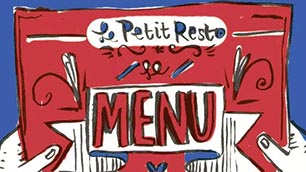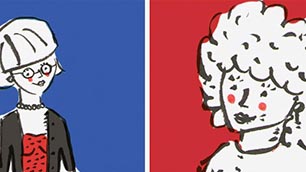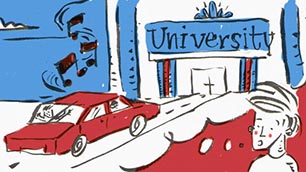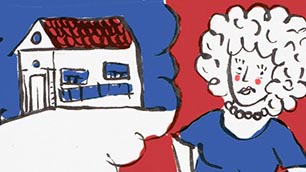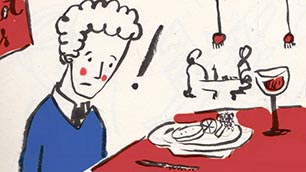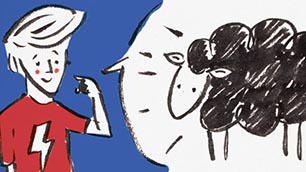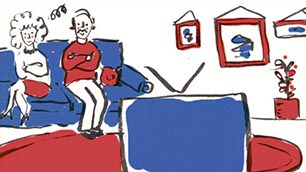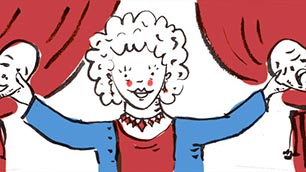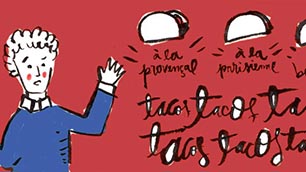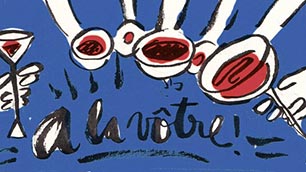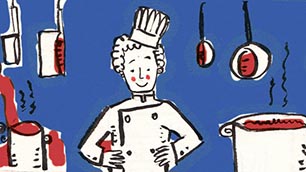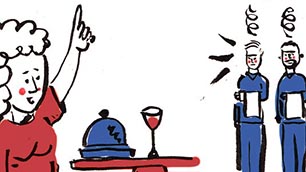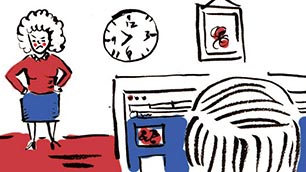ALLER IN THE PRESENT TENSE
So far we’ve learned être et avoir, 2 irregular but essential verbs. Today, we’ll learn another verb irregular verb in the present tense: aller - to go.
ALLER (to go) | |
| Je vais | I go |
| Tu vas | You go |
| Il/elle va | He/she goes |
| Nous allons | We go |
| Vous allez | You go |
| Ils/elles vont | They go |
Example:
- Où vas-tu ?
- Je vais au café.
- Where are you going?
- I’m going to a coffee shop.
Aller litterally means ‘to go’, but it is used figuratively in salutations to say how one is doing.
Example:
- Comment allez-vous aujourd’hui ?
- Je vais bien, merci.
- How are you today?
- I’m fine, thanks.
Aller is also used to talk about the near future, what one is going to do.’ In this case, the verb aller is conjugated and followed by an infinitive.
Examples:
Elle va habiter en France.
She’s going to live in France.
Nous allons être en retard.
We’re going to be late.
In this lesson we introduce 2 idiomatic expressions with aller. Both use the imperative which is the tense used for orders.
Allons-y means “let’go” and Allez-y or vas-y (familiar form) mean “go ahead”
So remember we never say ‘allons’ or ‘va’ alone but attach the y to it which means there.
PREPOSITION WITH ALLER
Prepositions are words used to establish relationships between different parts of a sentence. They usually have spatial or temporal meanings. They are invariable: they have one form, except the one we’re learning about today: à.
The preposition à means ‘to’ or ‘at’. In English, the ‘to’ and the ‘at’ never change. In French, à changes according to the gender of the noun that follows. It also contracts with the definite articles le and les.
| à + la = à la | à la banque / à la boulangerie / à la maison |
| à + le = au | au café / au restaurant / au marché |
| à + les = aux | aux États-Unis |
Examples:
Je vais à la banque.
I’m going to the bank.
Je vais au restaurant.
I’m going to the restaurant.
Je vais aux États-Unis.
I’m going to the USA.
For masculine and feminine words beginning with a vowel or a silent h, we’ll use à l’
Je vais à l’hôpital.
I’m going to the hospital.
When your destination is a city, you will always use à.
- Je vais à Paris. Et toi ?
- Je vais à Boston.
- I’m going to Paris, and you?
- I’m going to Boston.
Note that for France (and other countries), you will use en, whether you talk about the destination or the geographic location. We’ll learn why in another lesson.
Nous allons en France.
We’re going to France.
En France, il y a beaucoup de cafés.
In France, there are many coffee shops.
For masculine names of countries, we do use "au". For example, "au Mexique", but not "à l' " because even for masculine names of countries that start with a vowel or a mute "h" we use "en". For example, "en Irak".




